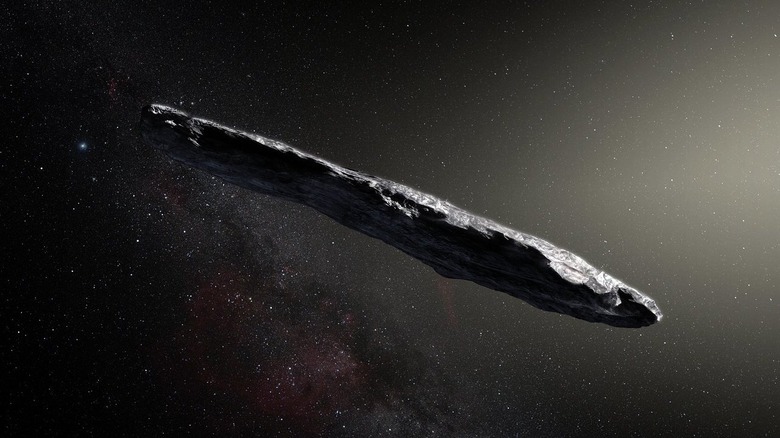That 'Alien Probe' Asteroid Might Be A Chunk Of An Alien Planet
- Oumuamua, the first interstellar object spotted by mankind, might be a fragment of a planet that was torn apart by its star.
- Researchers ran simulations to try to explain the object's bizarre, cigar-like shape.
- First spotted in late 2017, Oumuamua is speeding out of our solar system as we speak.
- Visit BGR's homepage for more stories.
It's hard to believe it was way back in 2017 that astronomers spotted the very first interstellar object in our solar system. The object — a long, cigar-shaped mass known as Oumuamua — sped into our system so fast that scientists barely had a chance to spot and study it. By the time they could focus their attention (and high-tech hardware) on it, it was already leaving. Nevertheless, a great deal of data was gathered, and researchers have been working hard to explain the object's origins ever since.
Scientists argued over whether it was an asteroid, comet, or perhaps even an object created by aliens. All possible options were seemingly already on the table, but a research paper published in Nature Astronomy offers a new and incredibly interesting theory to explain Oumuamua.
It's impossible to theorize the origins of Oumuamua without considering its unusual shape. Objects in our solar system don't look like long, thin cigars, and if Oumuamua is a mass of rock, ice, or a mixture of the two, how exactly did it get its bizarre shape? Yun Zhang of the Chinese Academy of Sciences' National Astronomical Observatories and UC Santa Cruz's Douglas N. C. Lin ran simulations to see how they might be able to reproduce an object similar to Oumuamua.
They found that objects like asteroids or comets that come a little too close to their star can fragment in a way that results in many smaller pieces breaking off and falling on either the far or near side of the main body, due to tidal forces. This could possibly explain why Oumuamua is so long and narrow, but there's an even more interesting wrinkle to this theory.
The researchers say that something similar could happen if an object as large as a planet were to drift too close to its host star. That theoretical world, torn apart by the forces of gravity, would be a floating field of objects of various sizes, all experiencing the same settlement of debris on their poles. Put simply, a planet could turn into a whole bunch of cigar-shaped objects that, as they tumble on new paths around their star, are flung out into space.
Is Oumuamua just a lone asteroid or comet, pieced together by tidal forces in a distant solar system, or is it a tiny piece of an entire alien world that was ripped to shreds by an unforgiving star? We'll probably never truly know, but it sure is fun to think about.
